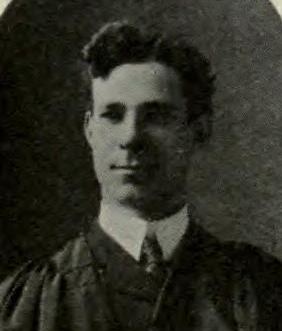Name Leslie Coleman | ||
 | ||
Leslie Charles Coleman (16 June 1878 - 14 September 1954) was a Canadian entomologist, plant pathologist and virologist who worked as the second director of agriculture in Mysore State in southern India. He conducted pioneering research on the pests and diseases affecting agriculture in the region and was instrumental in establishing several agricultural research institutions including the University of Agricultural Sciences, Bangalore and the Central Coffee Research Institute at Balehonnur. His major contributions to plant protection included measures to control a rot disease of coffee caused by Pellicularia koleroga (now Ceratobasidium noxium) known in southern India as koleroga. Coleman established an inexpensive control measure for another disease, also known as koleroga, a generic name for rot-causing diseases in Kannada, that caused complete destruction in areca plantations. Sprays of inexpensive Bordeaux mixture on the growing crowns helped control infection caused by what he described as Phytophthora arecae (now considered as Phytophthora palmivora).
Contents
Early life
Leslie Coleman was born in Durham County, Ontario, Canada, on 16 June 1878 to Francis T. Coleman and Elizabeth. He had three brothers and two sisters. The family appears to have moved between Toronto and Spokane, Washington and Coleman went to the Arthur High School and Harbord Collegiate Institute after which Leslie became a primary school teacher (following his brother Norman Frank Coleman who became a President of Reed College while another brother Herbert was principal of Spokane High School). In 1900 he joined Toronto University and graduated in science with a Governor General's Gold medal in 1904. Coleman spent the summer of 1904 at the marine research stations at Malpeque and at Georgian Bay where he studied oyster cultivation. He received the Frederick Wyld Prize for English Essay in 1905. He moved to Germany for further study and obtained a doctorate from the University of Gottingen. Here he studied nitrification by soil bacteria. From 1906, he worked at the Kaiser Wilhelm Institute for Agriculture and Forestry in Berlin for two years before he obtained a five-year appointment as Mycologist and Entomologist in the State of Mysore in India in 1908.
India
Coleman succeeded a German chemist, Dr Adolf Lehmann, who advised the State of Mysore on agriculture. Lehmann's appointment was the result of a committee headed by Dr Augustus Voelcker to improve agriculture in India. Coleman initially headed the Chemistry department of the Mysore Agricultural Department and began to study plant pests and diseases. He became a Director of Agriculture in 1913 and held the position until 1934. During these years he studied coffee rust, Hemileia vastatrix, and a disease of areca caused by Phytophthora palmivora (then called P. arecae). He also studied a mycoplasma infection that affected sandal and caused sandal spike.
He was also instrumental in establishing the Central Coffee Research Institute at Balehonnur in 1925 and the Mysore Sugar Factory at Mandya on 15 January 1934. He was also involved in the establishment of the Agricultural College at Hebbal in Bangalore (on 14 June 1946) which later became the University of Agricultural Sciences, Bangalore. He founded the Journal of the Mysore Agricultural Experimental Union (now called the Mysore Journal of Agricultural Sciences).
As a member of the board of agriculture in India, Coleman headed various committees and was responsible for the establishment of a statistical unit at the Imperial Agricultural Research Institute.
The genus of grasshopper Colemania and another species Parahieroglyphus colemani were named after him by Ignacio Bolivar. Coleman made an extensive study of Colemania sphenarioides, a pest in some regions that affected millet crops. The scale insect Coccus colemani which was found affecting coffee was named after him by his assistant entomologist Kunhi Kannan in 1918. Coleman was interested in the role of natural parasites and predators for the control of pests. He reared and studied many species of parasites. Telenomus colemani, Anastatus colemani, and Tetrastichus colemani are named after him. Coleman was the first to introduced legislative measures to control pests. He made it compulsory for planters to take measures to control coffee stem-borer.
Return to Canada
In 1925 Coleman briefly returned to Canada due to ill health to take up a position in the Toronto University department of botany. In 1927 a part-time position of plant pathologist in Ontario was created. He worked briefly on the dead arm of grapes caused by Cryptosporella viticola. Coleman did not continue for long and resigned to return to India. Coleman was made Companion of the Order of the Indian Empire in 1931. Working again for a few years in Mysore, Coleman retired from his position as Director of Agriculture in 1934 and left India to work at Toronto University, teaching and researching genetics. He worked on the cytology of Gasteria and Allium in 1936. In 1948 he studied the cytology of a grasshopper. He retired to move to Victoria, British Columbia and died in a car accident on 14 September 1954 shortly after returning from a tour through Karnataka as a state guest.
Coleman was married twice. His first wife May MacDonald Urquhart (born Oct 19, 1882) died on May 10, 1918 in the Biligirirangan Hills where she was buried in the Honnametti estate of R.C. Morris. They had a son John Urquhart Coleman. He married Phebe Ropes, an artist, in 1923. They had two daughters and a son.
